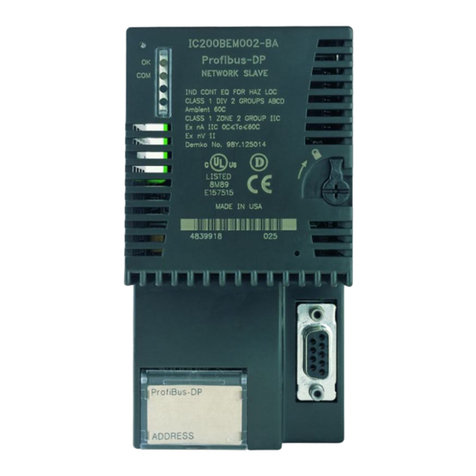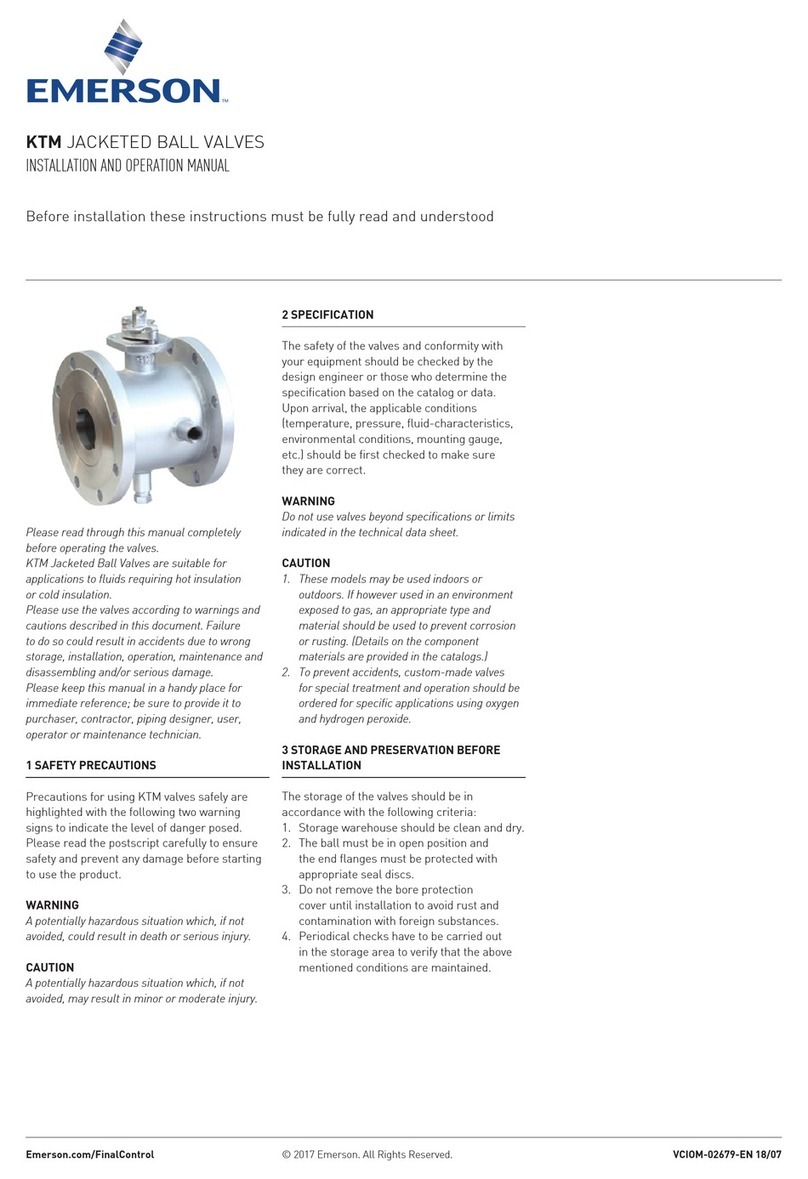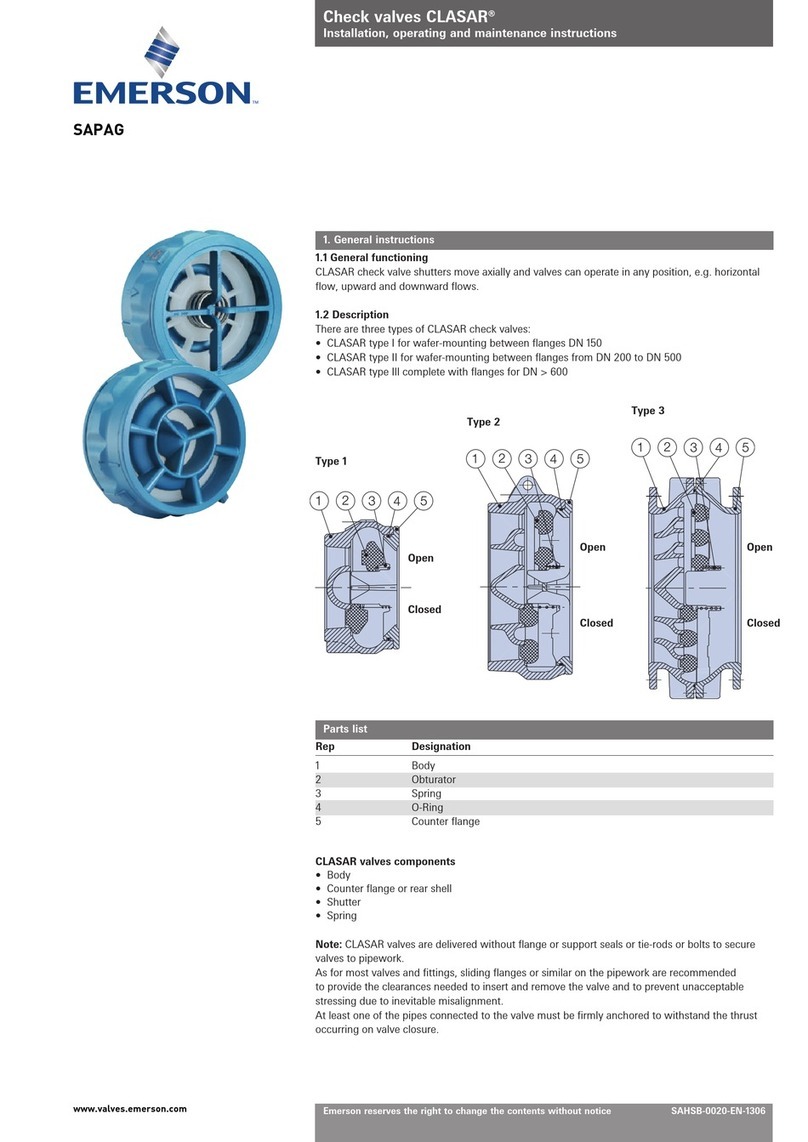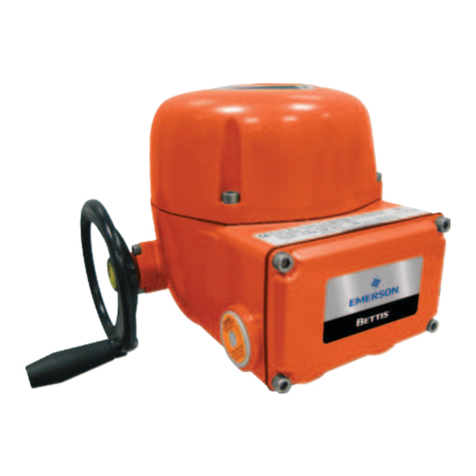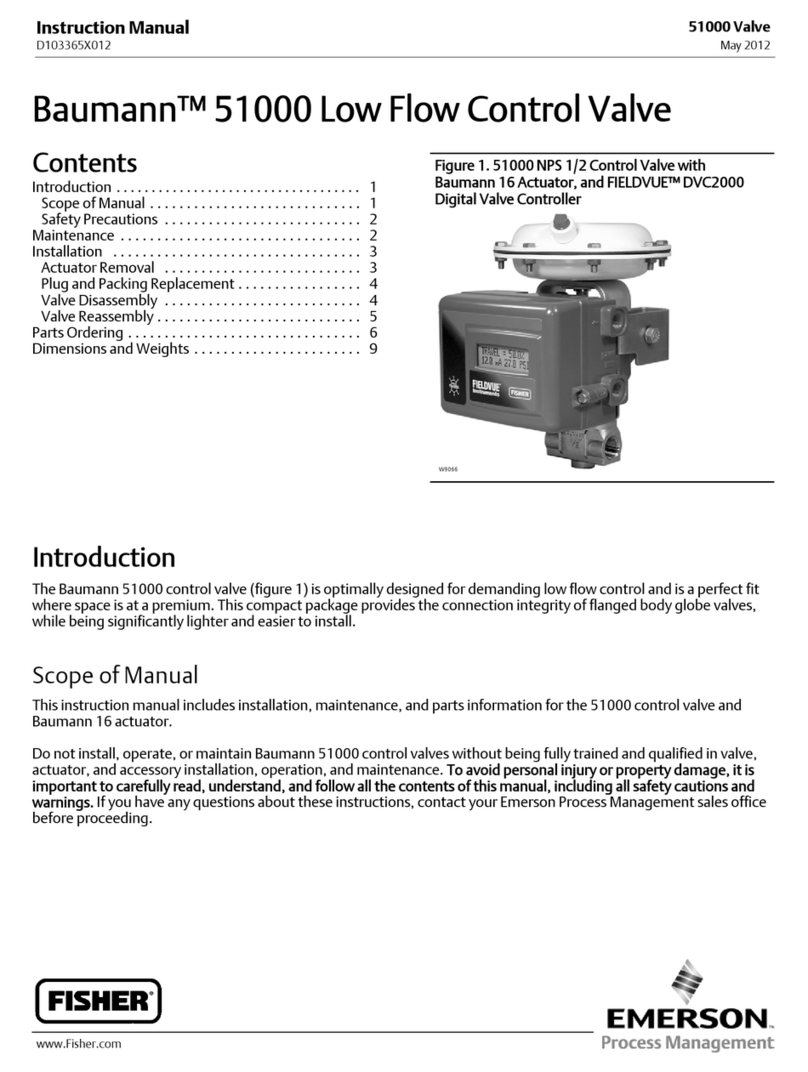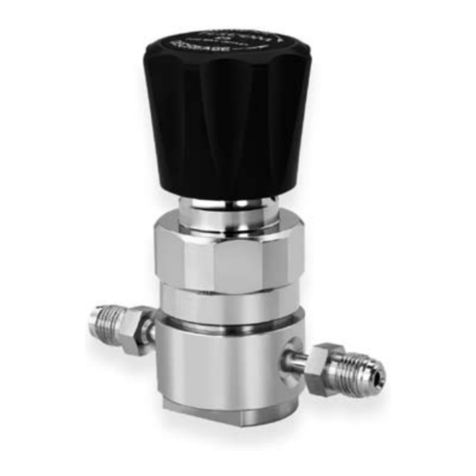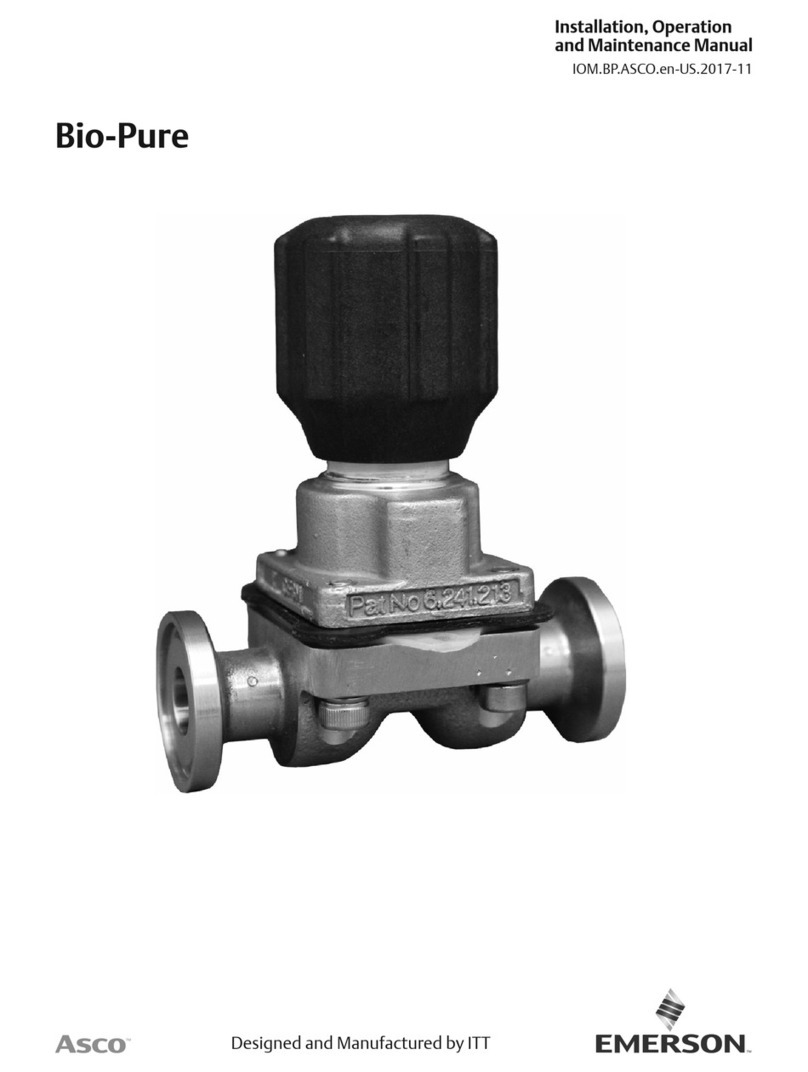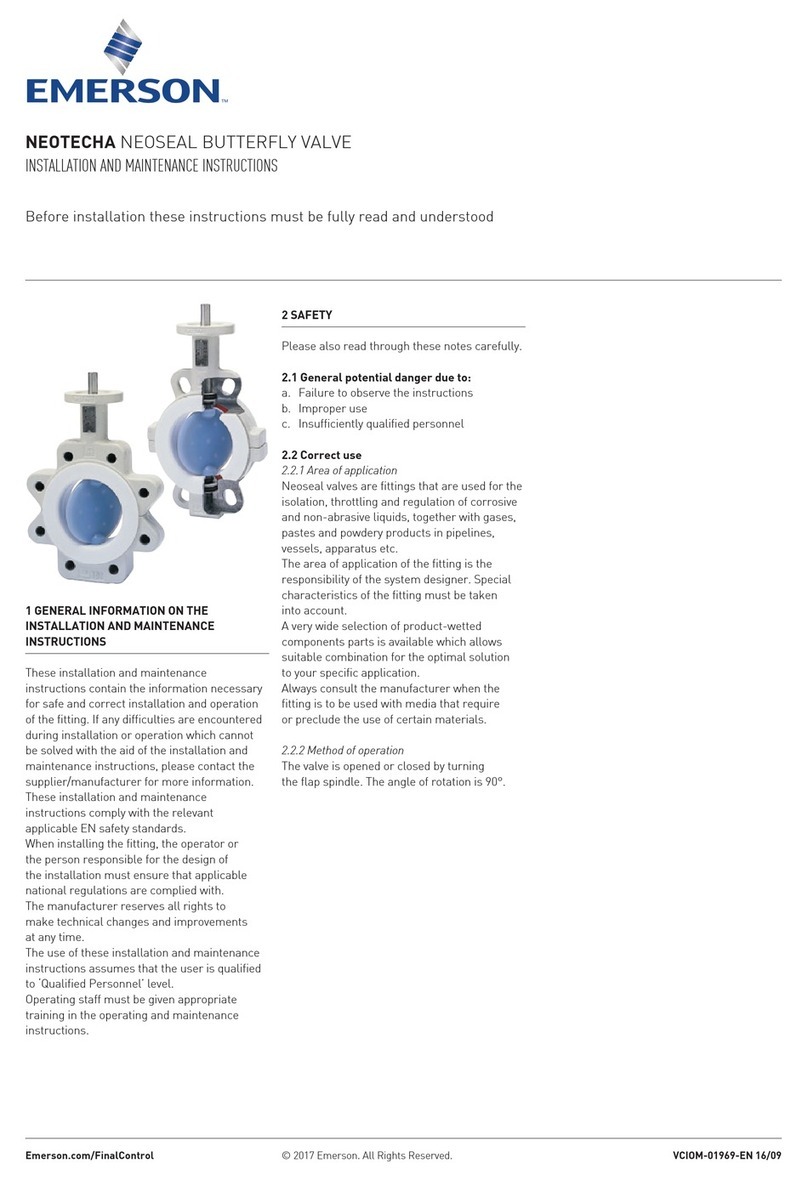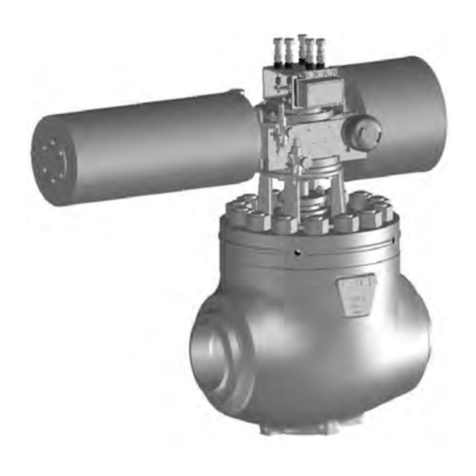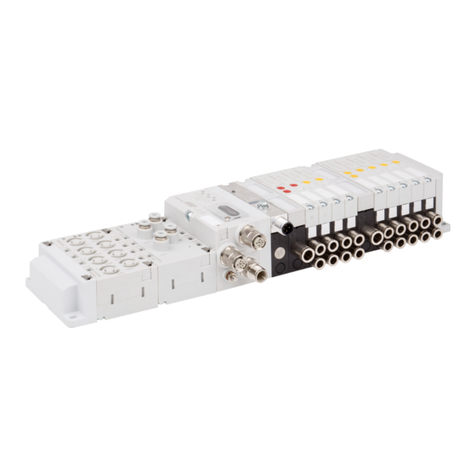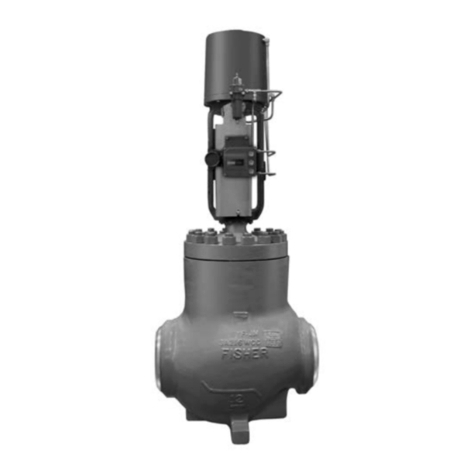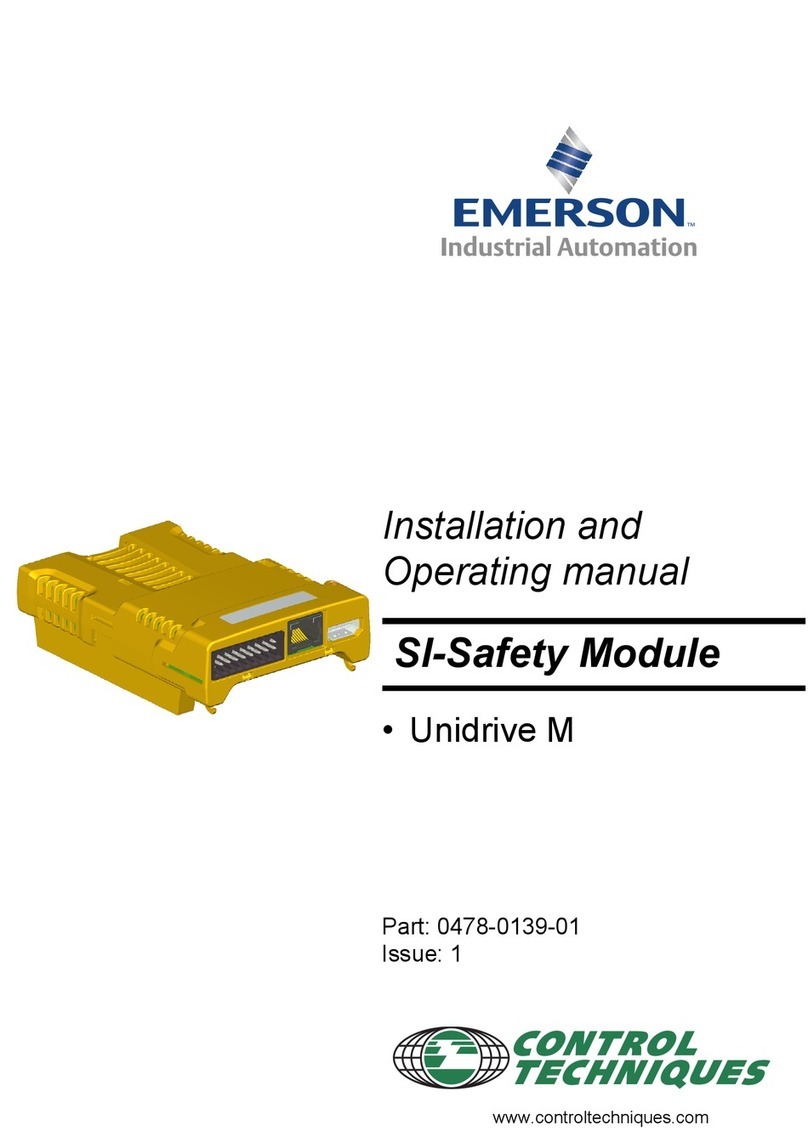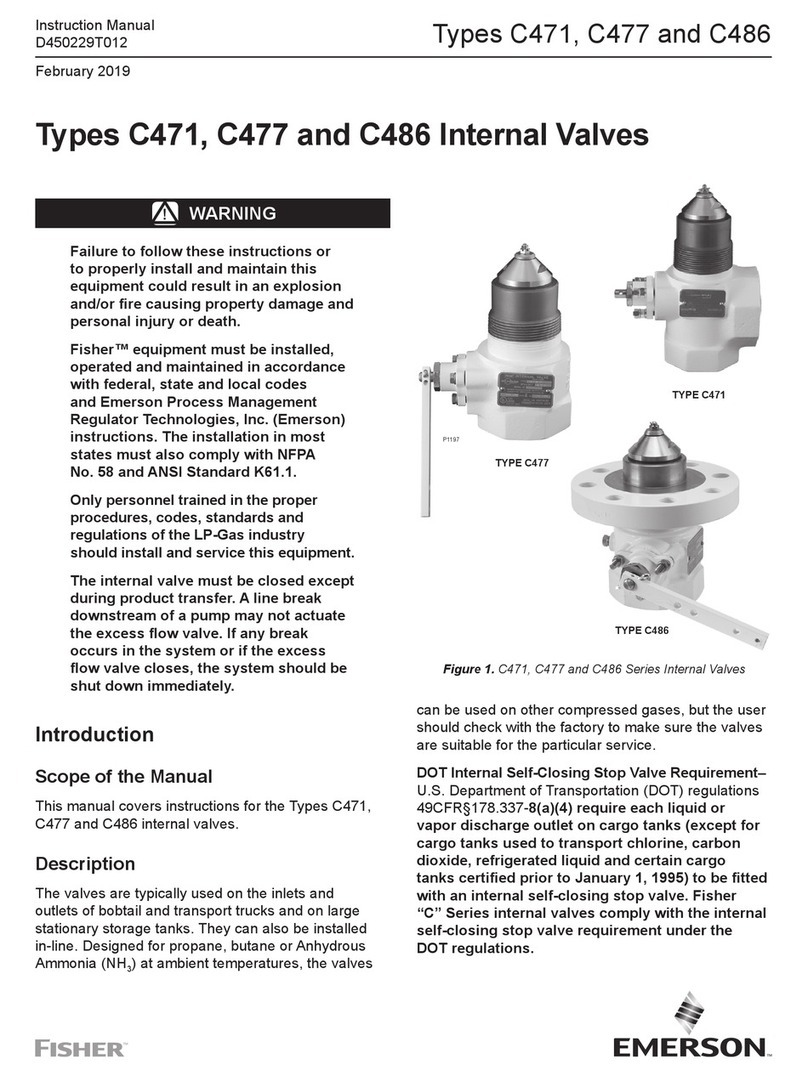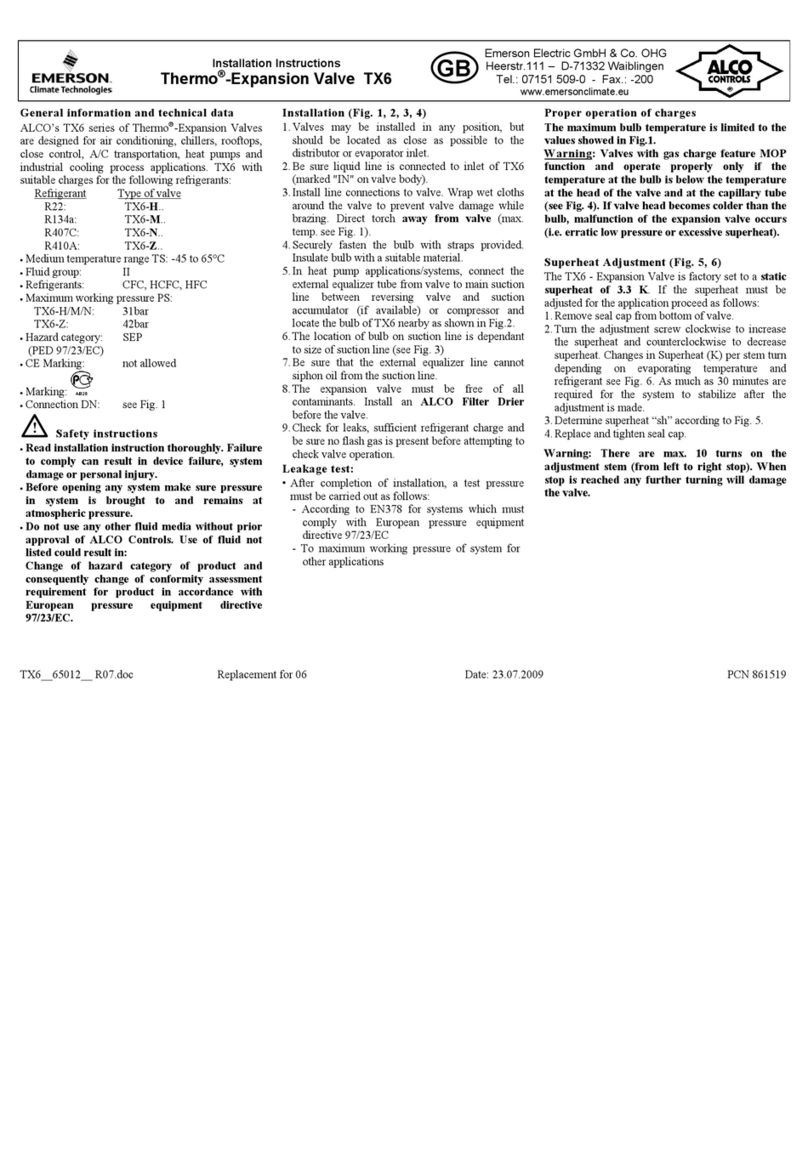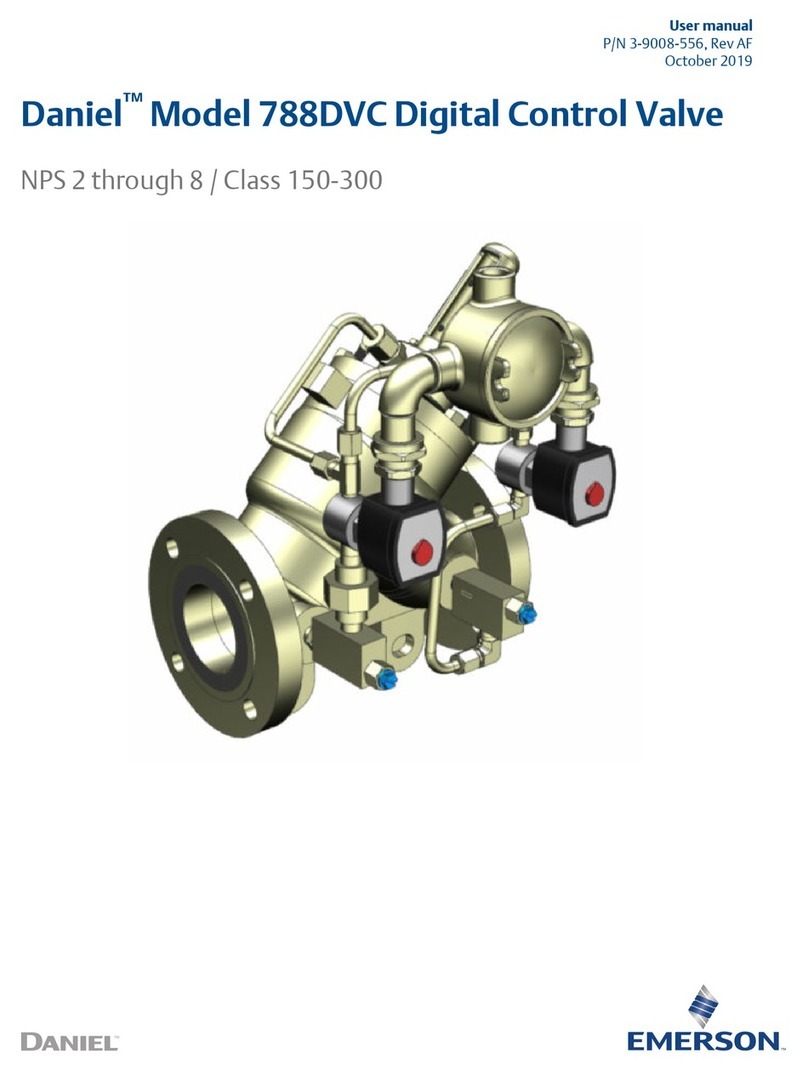
2
YY
Q
KEYSTONE COMPOSEAL BUTTERFLY VALVES, WAFER STYLE
InstallatIon and MaIntenance InstructIons
Notes
- The valve can be installed in the pipeline
either with or without the actuator mounted
on top of the valve. Make sure you are able
to turn the disc carefully to a more closed/
open position to prevent the disc edge
from touching the adjacent flanges while
positioning the valve.
- It is the responsibility of the valve user - and
not the valve manufacturer - to ensure
that the pipeline system has been built
professionally and the valve has been
properly installed.
- Adjacent piping must be positioned so that
minimal piping stresses are transmitted to
the valve flanges during or after installation.
- Handling and lifting of the valves during
installation must be performed following the
same instructions described in the previous
paragraph ‘1.3 Handling’.
- If an actuator or handle (especially the
composite handle) is to be mounted on the
valve, apply a little bit of grease to the shaft
to ensure easy assembly. Avoid hammering
or hitting on the handle or actuator during
assembling at all times.
- Remove the 4 snap-off nibs for installing the
valve between AS2129 E flanges NPS 3 only
(Fig. 2).
Fig. 1
2.2 FLANGE AND PIPE COMPATIBILITY
Check matching of flange drilling pattern of
valve and pipe flange before assembly.
Flanges have to meet the following
requirements (Fig. 1):
- The face inside diameter should be:
D min: The valve Q dimension + adequate
disc clearance.
D max: The optimum inside diameter (ID)
is equal to the inside diameter of flange
standard EN 1092-1, table 8, type 11. For
larger than D max inside diameters or
other flange types please contact your local
Emerson Sales organization, as larger inside
diameters might result in reduced valve
functionality.
- If the flange or pipe is provided with a raised
face, the diameter of this shall be at least
⅜” larger than the YY-dimension of the
valve.
The O-ring design of the Keystone CompoSeal
eliminates the need for gaskets. If for some
reason required, flange gaskets can also
be used. When flange gaskets are used
(min. 0.04" / max 0.08” thick rubber gaskets are
recommended) the O-rings must be removed
from the body.Use flange bolting in accordance
with the appropriate standard.
Dmax/min
Do not use the valve as a crow-bar to spread
the flanges, this might lead to damage to
the flange area and/or damage to the O-ring
sealing.
2.3 VALVE INSTALLATION
The valves are bi-directional and can be fitted
in either direction relative to the flow. The valve
will control flow equally in either direction. The
recommended installation position is shaft
horizontal and the lower discedge opening
downstream (especially for slurry service and
media with a tendency for sedimentation).
For optimum valve control and smooth
performance, it is recommended to have 10 to
20 pipe diameters of straight run inlet piping
and 3 to 5 pipe diameters straight outlet piping.
IMPORTANT
Mating flange faces should be in good condition
and free of dirt and/or inclusions.
Both pipe insides must be well cleaned before
installing the valve.
2.3.1 Existing system
1. Check whether the flange distance meets
the valve face-to-face dimensions. Spread
the flanges with adequate tooling for easy
insertion of the valve.
2. Close the valve so far, that the disc edge is
at least ½” within the body flanges.
3. Insert the valve between the flanges, pay
extra attention to the flange sealing O-rings.
Adequate flange spreading is required to
prevent the O-rings from rolling out of its
groove. Place 2 two flange bolts trough the
pipe flanges and the locating lugs of the
valve to support the valve.
4. Check if the flange sealing O-rings are still
in place.
5. Center the valve body and insert all flange
bolts. Tighten the flange bolts hand tight.
6. Slowly open the valve completely. The disc is
in line with parallel flats.
7. Maintain the valve flange alignment while
gradually removing the flange-spreaders
and tighten the flange bolts hand tight.
8. Slowly close and open the valve to check for
adequate disc clearance.
9.
Cross tighten all the bolts with the
recommended bolt torque shown in Table
1. Do not exceed the maximum bolting
torques, as this can lead to overloading of the
composite body!
Fig. 2
